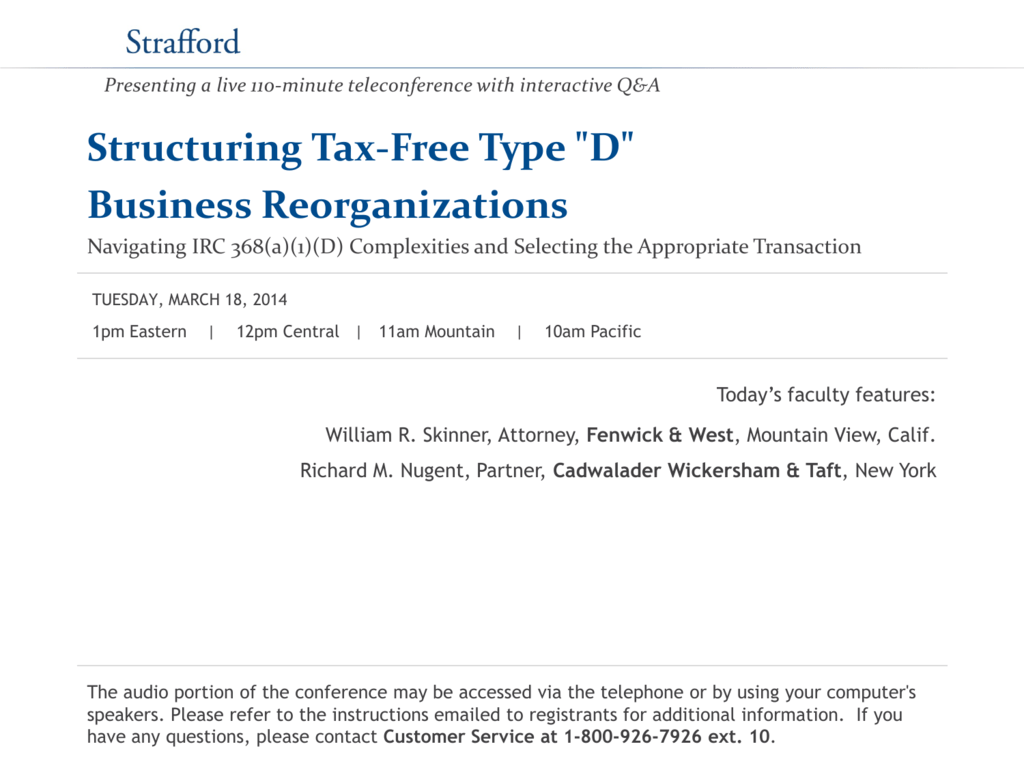

Valid Business Purpose requirement-Valid business purpose stipulates that the purpose of the reorganization must be required by business exigencies, an ordinary and necessary incident of the conduct of the enterprise, and not a device or scheme to avoid tax.Continuity of Business Enterprise (“COBE”) requirement-Continuity of business enterprise requires that the issuing corporation either continue the target corporation’s historic business or use a significant portion of the target corporation’s historic business assets in a business.Continuity of Interest (“COI”) requirement-Continuity of interest requires that in substance a substantial part of the value of the proprietary interests in the target corporation be preserved in the reorganization.These corporate reorganizations must generally meet certain requirements to potentially qualify for tax-free treatment: An “E” reorganization is defined as a recapitalization. An “A” reorganization, for example, is defined as a plain statutory merger or consolidation. Generally, corporate reorganizations are defined under Section 368(a)(1)(A)-(G) and may take many different forms. Effectively, in this instance, a change to the plan was “of little importance.” However, based on a recent Private Letter Ruling, the Internal Revenue Service (“IRS”) noted that the “plan of reorganization” requirement for an “F” reorganization was not undermined by a subsequent change to the plan midstream.

Plans, after all, are very important-if not essential-in the context of corporate reorganizations. Former British Prime Minister Winston Churchill once said, “Plans are of little importance, but planning is essential.” Perhaps that quote is a tad strong to apply generally to corporate reorganizations under Section 368 of the Internal Revenue Code.


 0 kommentar(er)
0 kommentar(er)
